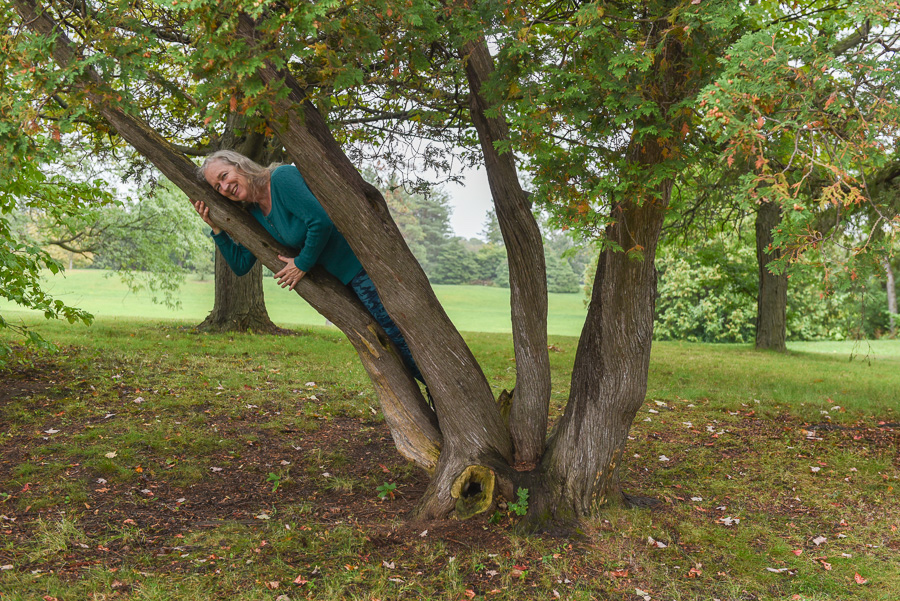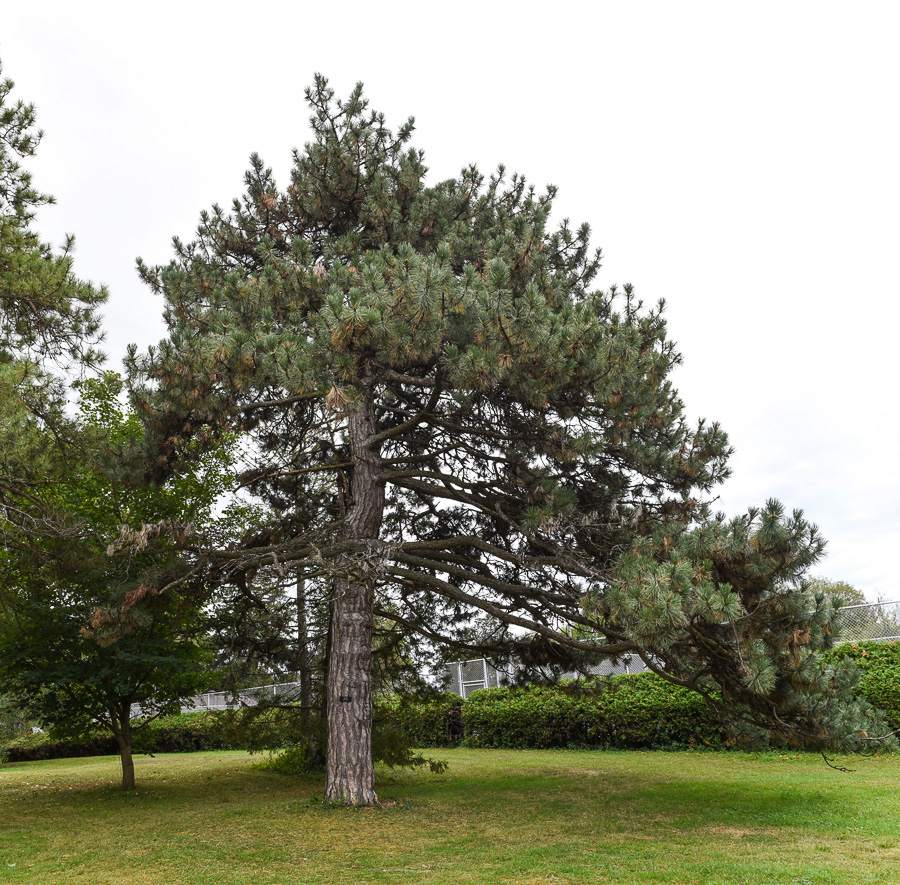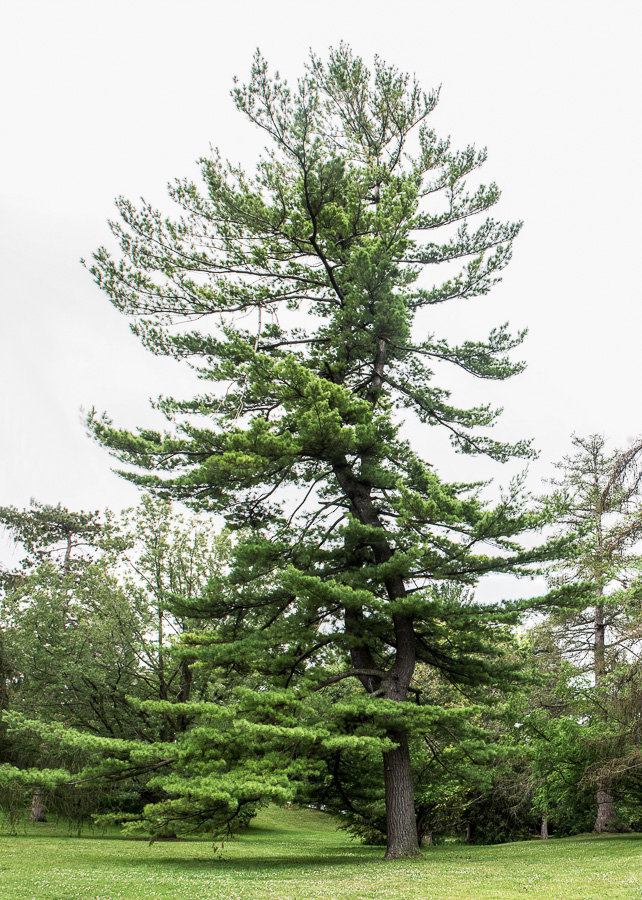The cover of We Stand With the Trees is an idyllic scene of a green field dotted with trees, with some tinged with the yellow and orange of early autumn in Ottawa. Within the pages, we learn why some Ottawa residents are taking a stand to oppose the removal of more than 700 trees to make way for the new Ottawa Hospital. Many were planted in the 1880s under the direction of the esteemed agriculturist Professor William Saunders, who also created and managed the Experimental Farm and Dominion Arboretum.

We Stand With the Trees cover. Photo: Jake Morrison.
The book is a collaboration between Ottawa author Jane Keeler and her partner, photographer Jake Morrison. It includes portraits of more than 50 trees, many over 100 years old, on the Experimental Farm and Queen Juliana Park campus. Most are slated for removal. Residents who posed with trees they chose to champion articulated their reasons for doing so with prose, quotations, and poetry. The text ranged from emotional declarations of love for the trees to reasoned, practical arguments against their destruction.
A few well-known Ottawans are pictured with the trees, including former city councillor Clive Doucet, poet Susan McMaster, and storyteller Jan Andrews. Other participants were a diverse cross-section of ages and nationalities, including individuals, couples, and families.

Susan McMaster with Tree #304, Siberian Aborvitae, to be removed. Photo: Jake Morrison.
No matter your opinion on the site selected for the new Ottawa Hospital and the upcoming disposal of myriad old-growth trees, this volume has merit. The high-quality photographs and pleasing layout make it an attractive offering. Each tree is pictured twice: once on its own and another with people. The informative introduction is paired with text, allowing the participants to express why they believe the trees are worth saving.

Tree #311, Serbian Spruce, 20 cm diameter, to be removed. Photo: Jake Morrison.
The text accompanying the portraits ranges from single sentences to longer passages to quotations. One participant cited one of the most Canadian protest songs: “Big Yellow Taxi” by Joni Mitchell, with the line, “they paved paradise and put up a parking lot.” Another participant chose the 1913 poem “Trees” by American poet Joyce Kilmer, which includes the familiar phrase: “Poems are made by fools like me, but only God can make a tree.” Coincidentally, some of the trees were alive when the poem was written.

Tree #1509, Austrian Pine, 56 cm diameter, to be removed. Photo: Jake Morrison.
Each tree photograph is captioned with a serial number, followed by its generic name, scientific name, and expected outcome, which for most, is the designation To Be Cut. Most photographs were taken in the summer, while a few were captured in the winter and fall.

Tree #1492, Eastern White Pine, 74 cm diameter, to be removed. Photo: Jake Morrison.
A veritable United Nations of trees are represented. I was not surprised to see maples, pines, and oaks, but amazed that the Kentucky Coffeetree, Serbian Spruce, European Larch, Siberian Arborvitae, and Ohio Buckeye could flourish in Ottawa. There were also exotic trees I had never heard of, such as the Amur Cork Tree, the wonderfully named Hops Hornbeam, and the Black Birch.
My favourite portrait was the Wingnut tree pictured with Diane McIntyre, who humorously noted that it was named for its tendrils, not the decision-makers who want to chop it down.

Dianne McIntyre with Tree #503, Wingnut, to be removed. Photo: Jake Morrison.
We Stand With the Trees is available from With Flare Press.









